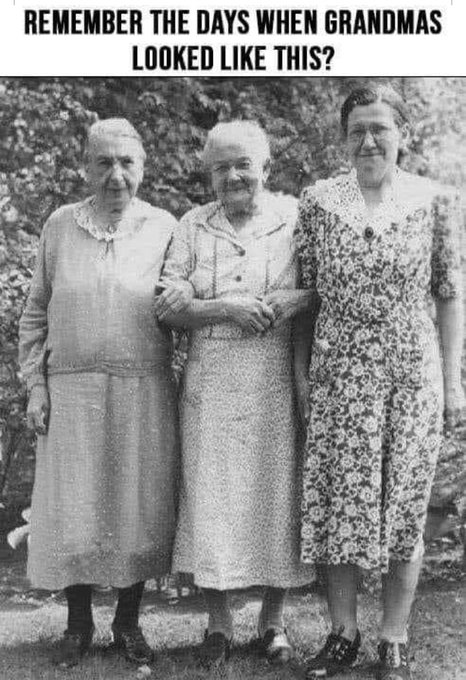

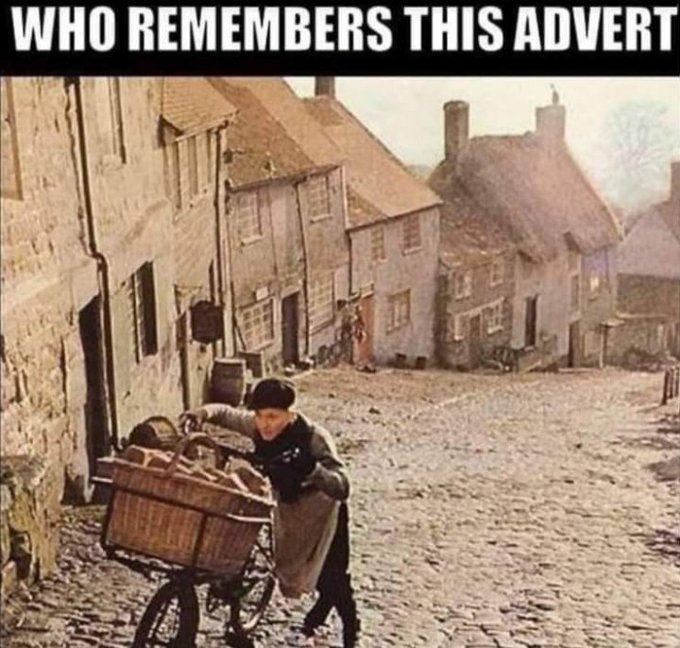

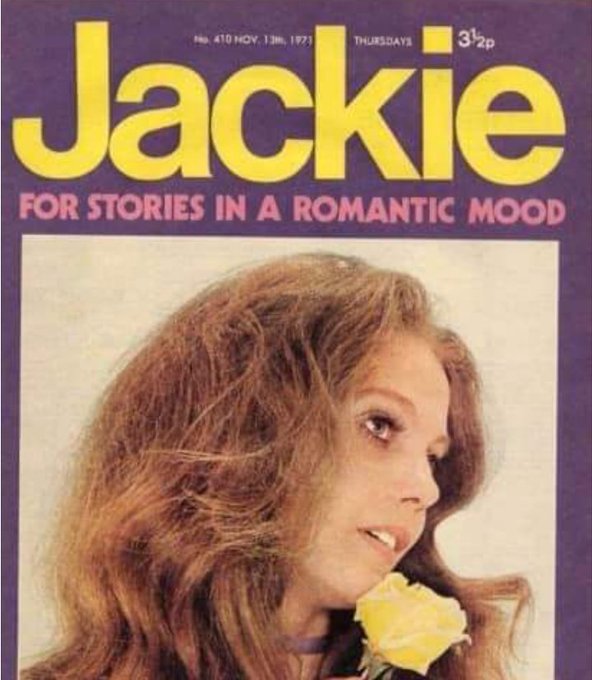

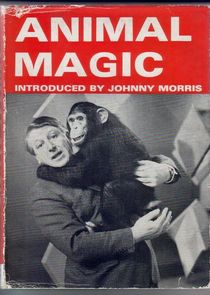
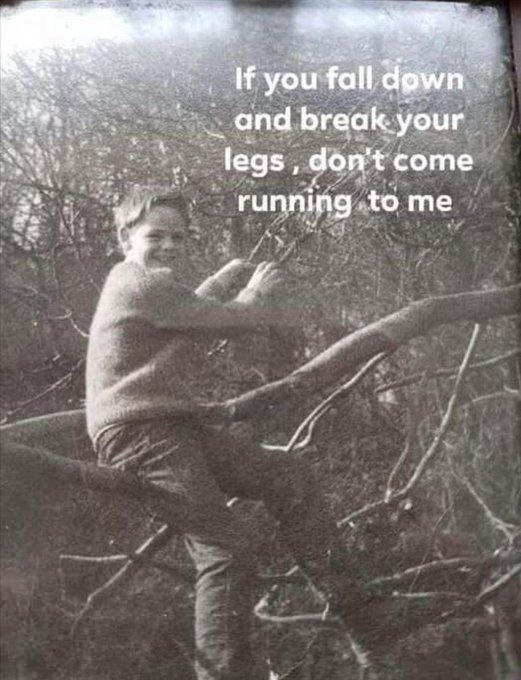
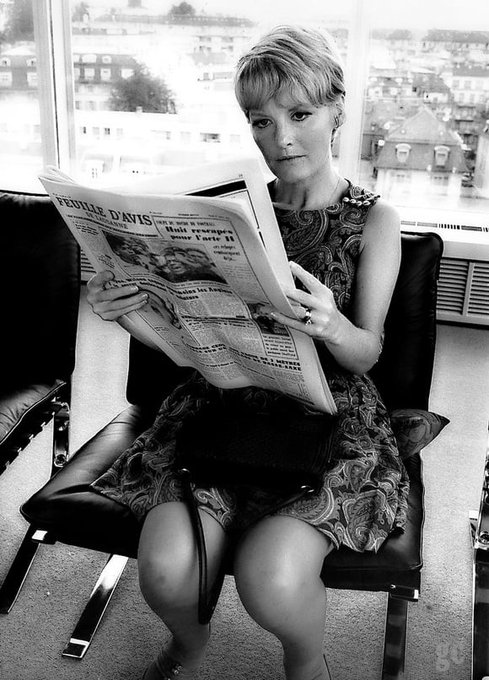
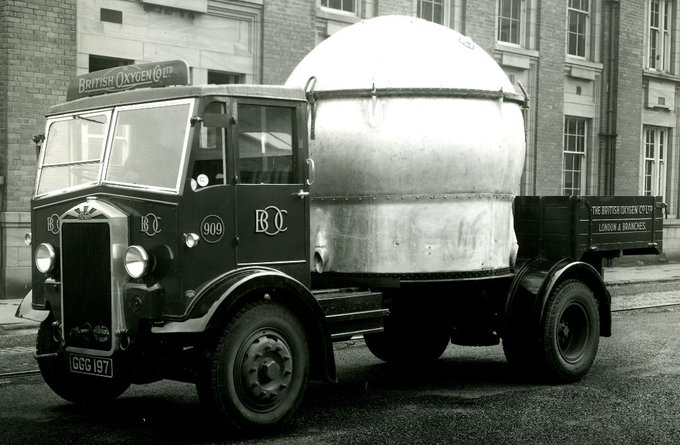
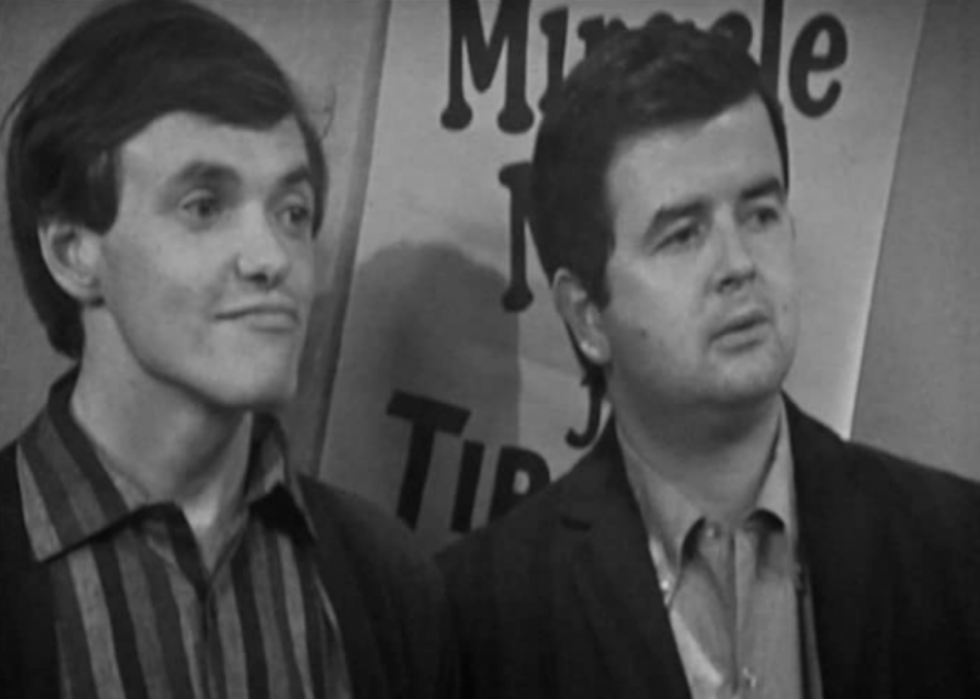
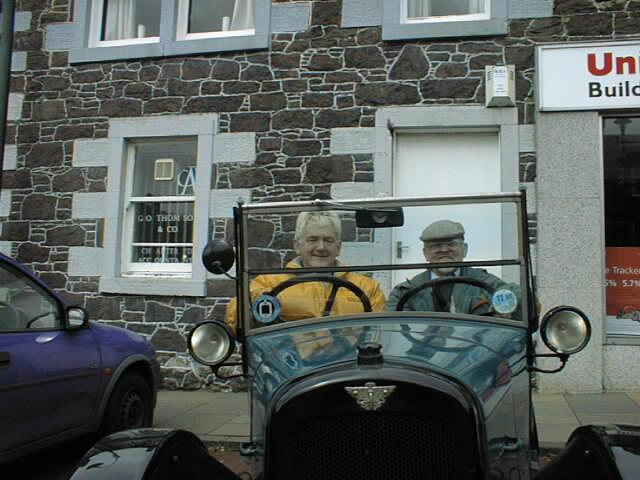



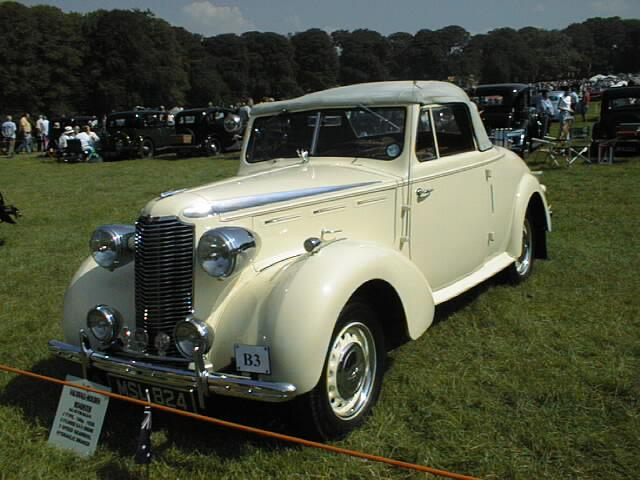




Thanks to Marcia and Dave.




















Thanks to Marcia and Dave.
I cost nothing to run so donate to https://www.broadcastingscotland.scot/donate/
The bilingual blog about all things British
Love, theatre and ideas
British Wildlife & Photography
Why Scotland should be an independent country
Thoughts about Scotland & the world, from a new Scot
Bipartisan dialogue for the politically engaged
Impartial Everytime Always
We Provide The Facts, You Make The Decisions
Exploring Rhymes, Reasons, and Nuances of Our World
Mark Doran's Music Blog
Songwriter / Guitarist
This site supports Scottish Independence
A comic about history and stuff by FT
The embittered mumblings of a serial malcontent.
an irreverent look at UK politics
Exploring the Depths of Curiosity
Nature + Health
http://netbij.com
Movies, politics, comedy and more...
Pic 3 – Hovis advert. Pic 6 – A spud gun – mine was metal. Pic 9 – Petula Clark. Pic 10 – An Albion BOC (British Oxygen Company) tanker. Pic 11 – The Likely Lads – James Bolam & Rodney Bewes. Pic 13 – St Enoch Square, Glesca – 1950s? Pic 15 – Laurel & Hardy. Pic 18 – Top Cat, changed to Boss Cat by BBC because there was a cat food called Top Cat and BBC could not be seen to be advertising. Pic 19 – Is it the IBM site at Spango Valley, Greenock? Pic 20 – The Ill-fated airship Hindenburg over New York with the Empire State Building in foreground.
LikeLiked by 3 people
Crivvens, Andi. That’s a pretty full house.
We await Dave on No 19. He sent it to me with a “where is this”… Needless to say, I don’t know.
LikeLiked by 1 person
Andimac’s quite right about Pic19, it’s the former IBM site in Spango Valley in Greenock.
In the distance you can see the long low white-topped building of the National Semiconductor factory – later becoming Texas Instruments.
Kilcreggan is across the river near the mouth of Loch Long and the sliver of water to the right is the Gareloch.
In the bottom right corner of the shot is the Greenock Cut, an aqueduct opened in 1827, bringing water from the 700 foot Loch Thom to power mills and factories by waterwheels built along the line of the waterway.
Although Greenock was the home of James Watt, father of the practical steam engine, the hydro power scheme was so efficient the town was one of the last on the island to adopt steam technology.
I remember during the notorious 3-day-week during the miner’s strikes in the 1970s, when firms could only use mains electricity on certain days to conserve coal stocks, one of the local rope works got their machinery back into operation and continued to work every day, using a water powered dynamo of ancient vintage!
LikeLiked by 5 people
Wow, morego. Seriously impressed here!
LikeLiked by 1 person
The only part missed was that Greenock was the third city that had electric lighting insatalled in the docks area.
We paid for the new facilities in Spango Valley,now signposted as Happy Valley, 2Large automated stores buildings now gone.
LikeLiked by 1 person
Andi……As you probably know, the big spire atop the Empire State Building was originally conceived as a mooring mast for airships in midtown Manhattan. It was never a practical idea, due to the wind currents around the buildings and other factors. They managed to dock an airship one time, very briefly, in 1931, but this picture is a fake.
https://www.smithsonianmag.com/air-space-magazine/docking-on-the-empire-state-building-12525534/
The Hindenburg, with the Nazi swastikas on its tail barely seen here, flew from March 1936 until it was destroyed by the explosion and fire on May 6, 1937. This picture is dated online as 8 August 1936. In its regular passenger service, the ship would probably make a pass over midtown Manhattan before heading west over the Hudson River to dock at Lakehurst Naval Air Station, New Jersey. It burned and crashed at Lakehurst less than a year later.
Top Cat was a Hanna-Barbera production, and was the second prime time animated series in the states, after the Flintstones, which was also from Hanna-Barbera. H-B also did the Jetsons and Yogi Bear.
Brief glimpses of Laurel and Hardy in Edinburgh in 1932. An onstage appearance at an Edinburgh cinema.
LikeLiked by 1 person
the Edinburgh cinema being, of course The Playhouse, opened as a cine-variety theatre just three years before this Laurel and Hardy appearance, and still going strong – but as a theatre, never a cinema these days (when covid restrictions allow ..)
LikeLiked by 2 people
Tom…….Interesting! It didn’t occur to me that the theater might still be there. They also had a UK tour in the 1950’s. I wonder if they ever got to Glasgow where Stan started as a music hall performer.
Wiki: Born Arthur Stanley Jefferson in London in 1890, he moved with his parents to Glasgow, Scotland, where he completed his education at Rutherglen Academy. His father managed Glasgow’s Metropole Theatre, where Laurel began work. His boyhood hero was Dan Leno, one of the greatest English music hall comedians. With a natural affinity for the theatre, Laurel gave his first professional performance on stage at the Panopticon in Glasgow at the age of sixteen, where he polished his skills at pantomime and music hall sketches. He was a member of “Fred Karno’s Army”, where he was Charlie Chaplin’s understudy. He and Chaplin arrived in the United States on the same ship from the United Kingdom with the Karno troupe. Laurel began his film career in 1917.
He visited his father, “Arthur J. Jefferson, an actor and theatre manager,” in London during the 1932 tour. Too bad no sound to the film.
LikeLiked by 1 person
Danny, the 1950s tour was the subject of a 2018 film (‘Stan and Ollie’) starring Steve Coogan as Stan and John C Reilly as Oliver. Entertaining, and well worth catching on BBC iPlayer here:
https://www.bbc.co.uk/iplayer/episode/m000sdz8/stan-ollie
As part of that tour, they played the Glasgow Empire (corner of Sauchiehall Street and Renfield Street, demolished 1963) for a week in 1954.
https://en.wikipedia.org/wiki/Glasgow_Empire_Theatre
The Empire was considered a graveyard for English comics. Mike and Bernie Winters joined the ranks of those crucified when they first appeared. Their act would start with Mike on stage playing a cheery number on his clarinet. After a couple of minutes, Bernie’s cheeky face would emerge through the centre curtains, only to be greeted at that first performance by a shout of “Oh my God, there’s two of them”.
It was also one of the few places you could legally drink late at night in Glasgow. The second ‘house’ each night was always a gallery sell-out, however busy other parts of the house, because the low price of admission gave access to the best drinking ‘club’ in Glasgow. And not just during intervals; the seats in the gallery would remain mostly unoccupied during the show.
Theatre managers in those days used to wear evening dress to welcome their audiences. But not in Glasgow at the Empire, at least not when visiting the gallery, where they were likely to get torn apart as over-dressed toffs and show-offs ..
LikeLiked by 2 people
Yes, I heard it had a reputation.
If you could cope with the Empire in Glasgow NOTHING would defeat you.
LikeLiked by 1 person
Thanks Tom. Great story about the Glasgow Empire.
That’s a film I’d like to see. I’ll try to locate it in the States. BBC Video Content……even programs that are posted on the BBC Website…….generally are blocked in the USA. I can get BBC radio programs but not television.
I see that I can download a BBC iPlayer App, which I assume requires a subscription. I’ll check to see if the film is licensed to one of the USA streaming services that I currently have. I’ve been thinking of getting an app for British content which is often otherwise blocked in the States.
I see this clip on YouTube. Apparently some newsreel/publicity film for the 1953 tour. They’ve clearly aged a bit from the earlier films.
LikeLiked by 1 person
This is labeled: “Laurel and Hardy Open The Romney Hythe Dymchurch Railway (1947).”
Described as being part of a 1947 UK tour.
LikeLiked by 1 person
LikeLiked by 1 person
Tris…..Very interesting! Looks like those could be the same doors to the Playhouse that are seen being opened in 1932.
Looks like the Panopticon theatre building in Glasgow is still there too.
https://en.wikipedia.org/wiki/Britannia_Music_Hall
LikeLiked by 1 person
Danny, the Britannia Panopticon is still very much there, I’m glad to say, and should soon be re-opening to the public for visits, Covid regulations permitting. And it’s well worth a visit (or two). The Panopticon claims to be the world’s oldest surviving music hall. It was saved from demolition, largely due to the efforts of the wonderful Judith Bowers. As you say, Stan Laurel made his stage debut there. On one visit, I bought a copy of Judith Bowers’ book about the Panopticon and she asked me if I’d like her to sign it. Of course I said yes and also said it would have been even better if Stan Laurel could have signed it. “No problem,” replied the inimitable Judith and signed it with Stan’s name 😃. The Panopticon still put on shows until the pandemic struck and I’m sure that as soon as it’s safe to do so they’ll be on again.
LikeLiked by 2 people
Danny, I meant to mention that another star made an early appearance at the Panopticon, one Archie Leitch. You probably know him better as Cary Grant. The Panopticon’s website is worth a look –
https://www.britanniapanopticon.org
LikeLiked by 2 people
Andi……Looks like a fascinating place. I’d forgotten that Archie appeared there. I like the story of the autograph seeker who said that he’d love to be Cary Grant. Cary supposedly replied “oh so would I.”
LikeLiked by 1 person
Danny, no doubt you’ve heard this one. On Cary Grant’s birthday, a newspaper reporter telegraphed him – “How old Cary Grant?” , to which the star replied, “Old Cary Grant fine. How you?”
LikeLiked by 2 people
🙂
LikeLike
Andi…..Clever way to dodge the age question. 🙂
LikeLiked by 1 person
Not to be confused with Archibald Leitch, the architect who designed football stadia…
LikeLiked by 2 people
Derek. The two different spellings of surnames was confusing at first glance on Wiki.
LikeLiked by 1 person
LOL. Good one, Andi!
LikeLiked by 1 person
Andi……Great story! 🙂 The Wiki article lists some of the performers who played the Panopticon. I see that Stan Laurel was 16 when he first appeared there.
LikeLiked by 1 person
Danny, an other attraction at the Panopticon is Mrs Mitchell’s Sweetie Shop (candy store) on the ground floor of the building – you can see it at bottom right of the building in the photo you posted. This is more than a sweet shop, it’s a wonderland for those with a sweet tooth. Here you can still buy sweets I ate in my childhood and youth (when I could afford them) and there are rows and rows of sweetie jars filled with sweets that even my grannie would have known – though probably seldom tasted – Russian Caramels, Soor Plooms, Rhubarb Rock, Mint Humbugs – to name but a few.
LikeLiked by 2 people
I’m betting Marcia has just booked her ticket!
LikeLiked by 1 person
Andi……Now I see the sign. The sort of (probably) privately owned specialty shops that you see less and less of these days. A place I’d like to visit.
LikeLiked by 1 person
The Hindenburg docked at Lakehurst, New Jersey:
The crash site at Lakehurst is marked by a silhouette of the Hindenburg atop a pole. The giant Hangar 1 that could house the Hindenburg is still there.
https://www.roadsideamerica.com/story/2160
LikeLiked by 1 person
Wow, tris, what a lot of memories!
Pic 1: Hovis. Largo from New World Symphony by Anton Dvorzak.
I recognize some of the next ones, too. I think I had that water-pistol.
Pic 7: Animal Magic. I don’t want to speak ill of the dead, but wasn’t Johnny Morris a typical BBC employee of that era?
Pic 11: The Likely Lads. James Bolam and Rodney Bewes. Thelma was played by Shiela Fearns.
Pic 14: Is that little chap the one later known as Boris Johnson?
tPic 15: I have never seen Laurel and Hardy in colour. Last week, I watched “Way Out West” in B&W.
Pic 18: Top Cat. The cartoon version of Sergeant Bilko. Phil Silvers as a cartoon cat.
LikeLiked by 2 people
Good one, Don Don.
I was reminded how much I like Dvořák’s New World Symphony and am minded to get a cd for the car.
The water pistol was actually a spud gun. You pushed it into a potato and got a small “bullet” up the spout. Then you could give someone a seriously sore ear.
I think they were probably very dangerous!
I’ve never heard anything untoward about Morris. I had a quick look at his Wikipedia page and nothing is said there…
https://en.wikipedia.org/wiki/Johnny_Morris_(television_presenter)
The cherub is not Boris, although there is a sort of similarity in that pic with the long haired Johnson as a little lad.

I’ll not say who it is because someone else might know. 🙂
Bang on for the rest.
Nice to have memories.
LikeLiked by 1 person
‘New World’ symphony recordings: there’s a great choice of superb ones, but my recommendation is Marin Alsop with the Baltimore Symphony orchestra, listed here:
https://www.gramophone.co.uk/features/article/dvorak-s-symphony-no-9-from-the-new-world-a-quick-guide-to-the-best-recordings
LikeLiked by 2 people
Thanks, Tom.
LikeLiked by 1 person
There was a waitress in Falconers tearoom in Aberdeen in the 1970s who looked like Top Cat. It was her specs that completed the look.
That was before Union Street turned into a shabby parade of pawnshops.
LikeLiked by 2 people
LOL. I’d like to see that! The waitress I mean, not Union Street. 🙂
LikeLiked by 1 person
andimac: ” . . . spud gun”
I concede: that plastic replica of a Colt M1911 is not a water-pistol. It looked familar, though.
LikeLiked by 1 person
🙂 🙂
LikeLike
tris: ” . . . . how much I like Dvořák’s”
Crikey tris, you’ve managed to get the accents right! How do you do it?
LikeLiked by 2 people
Cheated DonDon. I copied and pasted.
LikeLiked by 1 person
Dvorak was in America from 1892 to 1895, and spent the Summer of 1893 in Spillville, Iowa. He probably brought a draft of the New World Symphony with him, which would debut in New York City the following December. While in Spillville, he composed the String Quartet No. 12 in F major (the “American”) and the String Quintet No. 3 in E♭ major. He was also at the Columbian Exposition in Chicago that year, where he conducted a performance of his Eighth Symphony.
Mormon Tabernacle website:
“Many of Dvorak’s themes were inspired by African-American spirituals, which he heard in America. “I am convinced that the future music of this country must be founded on what are called Negro melodies. These can be the foundation of a serious and original school of composition, to be developed in the United States. These beautiful and varied themes are the product of the soil. They are the folk songs of America and your composers must turn to them,” said Dvorak.”
Dvorak in Iowa:
LikeLiked by 1 person
Amazing foresight there… Jazz, soul, rock n roll!
LikeLiked by 1 person
Dvorak wrote his Symphony No. 9 in E minor….”From the New World”…..in New York City in 1893, where it premiered that December. In 1922, William Arms Fisher, a student of Dvorak’s, wrote the song “Goin’ Home”. It’s a hymn-like arrangement and adaptation of the second (Largo) movement of the symphony with his own lyrics.
FDR died at Warm Springs, Georgia on April 12, 1945. A full page picture which ran in the next issue of LIFE has become an iconic image:
“Chief Petty Officer Graham Jackson became a personal friend of Eleanor and President Franklin D. Roosevelt, and had played command performances in Washington numerous times. He was present in Warm Springs, Georgia, when Roosevelt died on April 12, 1945. The two had been collaborating at the Little White House on a version of Dvorak’s “Goin’ Home” the day before. Jackson became a national icon when Ed Clark, a Life magazine photographer, captured a photo of a tearful Jackson, accordion in hand, playing “Goin’ Home” as Roosevelt’s funeral train left the station at Warm Springs.”
LikeLiked by 1 person
Touching story and beautiful version of Going Home.
LikeLiked by 1 person
Geeeeez you didnt leave many
Pic 17 My mammie doin the washin, back in the day.
LikeLiked by 1 person
You gotta be up early to beat DonDon and Andi, Kanga!
LikeLike
BTW…….does anybody have a bold black line across the WordPress window, about 20% up from the bottom? I have that line in MNR using three different browsers on my Windows PC. It stays stationary when scrolling.
LikeLiked by 1 person
Yes, I have that.
LikeLiked by 2 people
Thanks Marcia. Since it’s on my screen regardless of browser, I assumed others might have it.
LikeLiked by 1 person
Aye, well, Marcia, you subs will have to rise too. Munguin is rubbing his flippers together at the thought, whilst ordering more champagne. 🙂
LikeLiked by 1 person
Nope.
If you’re getting an extra line, Danny, Munguin may be forced to increase your subscription payments! 🙂
LikeLiked by 1 person
LOL Tris……I admire Munguin’s optimistic attitude. He manages a positive spin and increased revenue on everything. 🙂
LikeLiked by 1 person
Tell me about it, Danny!
LikeLiked by 1 person
🙂
LikeLike
No.12 a guess, as usual. Could it be Lochgilphead, and something to do with Argyll Cars?
LikeLiked by 1 person
Over to Dave, who sent that one to me.
LikeLike
I don’t know where it is, but the car’s a 1920s Austin 7 Chummy. I did John O’Groats to Land’s End in one with my brother-in-law; it took us 20 hours and 20 minutes, we were first to arrive – we were there before the photographer.
LikeLiked by 1 person
Who had the steering wheel that worked?
LikeLike
Changed driver every other refuel.
LikeLiked by 1 person
The 1973 Hovis commercial.
LikeLiked by 2 people
LikeLiked by 2 people
LikeLiked by 1 person
Pic 19 is indeed the IBM site in the Spango valley above Greenock, the factory had it’s own Railway Station on the Wemyss Bay line which can be seen running along the southern edge of the site, the station was called IBM, one of the few if not the only station on the BR network that was an acronym, the platform is still there.
LikeLiked by 2 people
IBM is an abbreviation, not an acronym. Acronyms are abbreviations that are also spoken as a word: NASA; NATO; RADAR etc…
LikeLiked by 1 person
I stand corrected.
LikeLiked by 1 person
If you want to be picky it should properly be referred to as an ‘initialism’ rather than an abbreviation as the letters are pronounced individually. (EYE-BEE-EMM). 😊
LikeLiked by 1 person
Goodness, Roddy. 🙂
LikeLike
Interesting fact, the computer driven mad in Danny’s favourite film takes the initial letter before IBM to become…
LikeLiked by 2 people
“…I can’t let you do that…”
The mad psychaedelic bit is quite something.
LikeLiked by 2 people
Conan……Actually, as pretentious cinematic rubbish goes, I’ve always found Dave’s conversation with HAL to be somewhat less objectionable than the rest of the film. It probably has something to do with the scene having……..DIALOGUE……..and what might briefly pass for a story line. So the HAL/IBM connection adds interest, and even makes sense. Unlike the rest of the film I’d say. 🙂
Douglas Rain died in 2018. Although he was the voice of HAL, the New York Times said that he never saw the film. A sensible man! (Someone who saw it probably warned him.)
LikeLiked by 1 person
LOL. It does seem unutterably ghastly.
Imagine having to sit through that in a cinema…HAVING PAID!
LikeLiked by 1 person
🙂
LikeLiked by 1 person
Correct, J.
Technically, you were only allowed to alight and board from the station if you were on IBM business, as the access path was owned by the company and not open to the general public.
I can’t think of any other station in Scotland where this applied.
That being said, I never saw any users being asked the nature of their visit and I know that residents of nearby houses used it regularly without impediment, as accessing the station did not take you near sensitive areas of the plant.
LikeLiked by 1 person
4 – An advert for Bandit. Doesn’t really say what is in it.
5 The teenage magazine for girls in its heyday. A DC Thomson publication. A lot of Dundonians appeared in their photo stories as they used to trawl through various offices asking for volunteers to “act ” for their stories.
LikeLiked by 1 person
Ha ha ha ha ha… That’s awful!!!!
LikeLike
Is one of the two in pic 12 Fred Dibnah, an unlikely, but pretty good programme presenter?
LikeLiked by 2 people
Help, Dave….
LikeLike
12 – High Street, Biggar – nice building, and still there!
LikeLike
Beautiful stonework. Looks like a nice wee town.
LikeLiked by 1 person
Didn’t recognise Biggar High Street thpugh my parents moved there while I was at Uni.
Some of Dibna’s programmes were really interesting. I think my favourite was the one where he brings down a massive chimney along the exact path he worked out for it just by knocking out some bricks on one side, replacing them with pit props and then setting a fire. Made it look so simple. An old video of that would be great to see sometime!
PS Glad it’s no longer expected one should look like the Grannies in No ! Mind you, mine was always in black, no flowery pinnies for her.
LikeLiked by 1 person
No sooner the word… and at no extra cost (at least not much) here you are…
LikeLike
Yes Biggar.
Nobody has spotted the two steering wheels on display, car is an Austin Seven Chummy.
LikeLiked by 1 person
Crikey. How did I miss that..
What happened if one of you wanted to go left and the other one right?
LikeLike
Only one actually connected to the steering box, I find it easier that way.
LikeLiked by 1 person
LOL Means you always get your own way?
LikeLike
Anyone here old enough to have a record of the “New World” as Symphony no 5 under the old numbering ? Think I have seen 5 given in brackets on old DGG mono. My first purchased 9 was on a label branded as “Gala”, 16/9p, mid 50’s b4 the appearance of any mainstream budget labels. Made of a form of plastic quite unlike vinyl. Budget vinyl came in with the 60’s, with it the release at budget price of ” seconds” i.e. recordings by mainstream artists judged to be deficient by some criterion and released under pseudonyms, which introduced us to eg the Cincinnati Pro Arte Orchestra conducted by Homer Lott.
My pals and I were once admonished for drinking water from a dubious source and told that if we woke up deid in the mornin’ we’d ken a’ aboot it.
Our favourite TC character was Benny the Ball. We had a neighbouring black furry cat thus christened which ruled the area till sorted out by our semi- feral kitten.
My abiding image of James Bolam is as Jack Ford in When The Boat Comes In, of Rodney Bewes as one of the lads who mocks Tom Courteney in Billy Liar. Was sorry to read that the pair fell out so badly in later life. The line in the Whatever…theme song, “It’s the only thing to look forward to,the past” might be my Saturday theme music..
LikeLiked by 2 people
Not old enough to have that, Cairnallochy. I didn’t even realise there were different kinds of vinyl (although I have a lot of the stuff) I think some was thicker than other stuff.
Imagine waking up deid!
https://www.comedy.co.uk/features/comedy_chronicles/strained-relationships-bewes-and-bolam/
Sad story…
LikeLike
Think Bolam and Bewes fell out when the latter revealed the news that Bolam’s wife was pregnant, something he didn’t want broadcast.
LikeLike
Jings. Seems a little thing given their friendship over the years.
LikeLike
Bolam is famously guarded about his private life, never giving interviews.
He takes the view that you wouldn’t ask the plumber or the postman about their lives, so why should you expect an actor to reveal his or her private business?
He had a point, and wouldn’t have taken well to someone discussing these matters with the press.
LikeLike
I suppose that’s fair enough in a way.
LikeLike
I’ve just checked and i haven’t got the New World, but thanks for pointing out that the numbering had changed and it was originally No5. I was puzzled by the other number.
I do still have the 4 Mozart Horn Concertos, played by Dennis Brain, but no longer anything to play them on!
I remember James Bolam in ‘When the Boat comes in’ and also ‘The Biederback Affair’ with the jazz signature tune.
LikeLiked by 2 people
Cairnallochy…..I found several comments that said : “In older literature and recordings, this symphony was often numbered as Symphony No. 5.”
But I found no explanations of when or why it was changed in the Dvorak catalog.
http://classical-music-maniac.blogspot.com/2014/10/the-new-world-symphony-dvorak.html
https://www.britannica.com/topic/New-World-Symphony
LikeLiked by 1 person
Me neither. Possibly the composer’s reticence to have some works included in the “canon”. I don’t even know if “old” symphonies 1 – 5 corresponded to 5-9 in the newer numbering or whether the New World occupied position 5 in a pre-ordered sequence of 9. Will see if I can find anything online.
LikeLiked by 2 people
Cairnallochy………It would be interesting to know. There are references to Dvorak having visited the 1893 Columbian Exposition in Chicago, where it’s said he conducted his 8th symphony. So I wonder if that symphony was in fact called No. 8 in 1893. If so, it would seem that the “New World” should have been No.9 from the very start, since it was first performed at Carnegie hall in New York City in December of that same year.
Said to have been such an immediate success that the Carnegie Hall audience cheered at the end of each movement, causing him to stand and take bows. I wonder if he did any work on it that summer of 1893 in Iowa. Or if it was already at the publisher. Interesting!
LikeLiked by 1 person
I met Rodney Bewes under fairly bizarre circumstances.
Many, many moons (at least 250) ago I turned up at the Assembly Rooms (George St, Edinburgh) to get rid of the various bits of kit (mainly seating rakes) after the Fringe. A ‘sair yin’, a brutal job; hour after endless hour of carrying heavy (and often awkward gear) down the stairs, out into George St, up a ramp and into shipping containers. Bespoke gear, nothing modular, had been used to turn various rooms into small theatres; all being put into storage for the following year.
You’d pick a beam say, throw it over your shoulder and walk it down being careful to avoid damaging wallpaper; bannisters; colleagues pedestrians or Rodney Bewes! Not someone you’d expect to see in a shipping container on George St, or anywhere else.
Rodney had just completed a run and had become friendly with the guy in charge of the pack (who’d have been doing something else, production wise, during the run). He was there for hours, chatting away to his new bestie, us, punters who’d recognised him.
Never seen anything like it before or since and I worked events, on and off, for over 20 years.
LikeLiked by 2 people
He was a good guy, then, Drew?
LikeLike
He was certainly friendly and didn’t show any signs of being full of himself, can’t say much beyond that.
It’s rare for grunts to have any interaction with artistes at all. Even if you’re working the show, your time on stage is when the talent is off it. Sometimes, during a soundcheck, you’ll have to change a mic or swap out a cable and may or may not get thanks, to which you’ll respond and that’s about it.
Very, very occasionally (as in once in a blue moon, but only in a leap year) an artiste will seek out the locals to thank them. The first time it happened to me was Willie Nelson making his way to the stage door at the Usher Hall. It was years and years before Charlie Reid did similar at the Corn Exchange. So to have Rodney Bewes hanging about and chatting away, the day after his last show, was unusual in the extreme.
I did events because it segued well with the other stuff I did. Apart from a few days either side of the festival, which were easily accommodated, they were busy at different times of the year. It was interesting, the banter was good (often more entertaining than the show), but it was far from glamorous.
If things ever get back to something like pre Covid circumstances, I haven’t entirely ruled out a few guest appearances; even though I know it’ll hurt my bones for a few days afterwards.
LikeLiked by 1 person
Most of show business, I am reliably informed, is very far from glamorous.
And sometimes, people who win talent competitions and become overnight stars, have problems accepting that just because you made it you can stop working really hard.
But it never stops. I’ve been at a sound check with Petula and she’s run through a few songs, heard ONE note she didn’t like in the music and has taken 15, 20 minute to get it sorted with her MD.
It’s supposed to look easy once you’re up there in the limelight, but it doesn’t just happen.
LikeLike
One time in the pub someone I’d known for quite a while introduced me to some visiting friends with ‘he does security at gigs’, to which I responded with ‘no, I do production’. ‘What’s that’? In his mind’s eye working gigs meant security, the gear on stage just levitates there from some magical source.
I had to explain that we (around a dozen each of local and road crew) started at 8 or 9, then load in catering; lights; sometimes video; PA; stage set and backline. We’d then help set it up, synch it all up, then hide all the flight cases. A couple of the local crew would hang back for soundchecks and to load in support band/s, if any. If there was support, you’d get a show call for each changeover. One or several guys might come in early for follow spots. After the show it’s back to full complement, everything gets packed, loaded and sent on its way. We’d usually get done around 1. Long hours with short bursts of intense activity and a lots of hanging around.
Factor in contract bar staff; security; first aiders (including a paramedic) and an after-show cleaning crew, it takes several dozens of freelance personnel to put a gig on.
LikeLiked by 1 person
Yes, absolutely.
LikeLike
I played in the Assembly Rooms once, when the Edinburgh Charities brass band competition was held there.
Afterwards, all the instuments were piled up outside while we waited for the bus. Everybody pissed off to get something to eat (or drink), leaving me – the youngest – to keep an eye on the gear.
Eventually the rest of the band drifted back, and it was my turn to go to the chippie in Rose Street. It was a Saturday night, quite late, and I was all on my own, aged about fourteen. I’ll never forget the sound of breaking glass . . .
LikeLiked by 1 person
What a miserable lot.
LikeLike
Hmm, thin pickings today, I take back what I said last week 😒
no. 13 – the double decker nearest is a pre-war (1938-40) AEC Regent with Weymann body on route 7b (Toryglen), furthest away is a 1950 Daimler CVD6 with Alexander body on route 5a (Castlemilk).
Scene is St Enoch Square in the mid-1950s, the style of Alexander coach in the background first appeared in 1954.
LikeLiked by 2 people
THREE… that is 3 busses, and you call that slim pickings?
Why, Munguin has had to take one of his Pils and have a lie down.
None of the THREE stumped you though, I see…
🙂
LikeLiked by 1 person
Nice one, nearest bus is a 1921 AEC ‘K’ type (30hp petrol) with Short Bros. bodywork belonging to London General.
Shown here at a London Bus Museum open day, it was initially sold to a farmer in 1930 as a hen-house (petrol-engined buses of this era tended not to have a long life) then later converted to living accommodation.
Rescued and restored in 1968 by a private owner it is roadworthy and has been rallied.
LikeLiked by 2 people
What a fulfilling career that wee bus has had.
🙂
LikeLike
Anyone know where Pic 2 is?
LikeLike
I think it’s Glasgow in the early 60s, Andi. Don’t know where though.
Anyone else?
Also, no one got the cherubic wee lad… Leonardo di Caprio.
LikeLiked by 1 person
London apparently.
(Marc Riboud, London, 1954)
! https://www.tate.org.uk/art/artworks/riboud-london-p81013
LikeLiked by 2 people
Well… how wrong could I be… Wrong country, wrong decade.
I got the continent and century right though, Munguin…
Please don’t sack me and replace me with Roddy.
I can see it now: Munguin New Bus Republic.
LikeLiked by 1 person
… “do I not like that” 😊
LikeLiked by 2 people
The Tate may have got that wrong. On http://marcriboud.com/en/countries/england/ the photo is labelled as Leeds, 1954.
Wherever it is it certainly captures the era. The grannies from Pic 1 would not be out of place.
LikeLiked by 1 person
LOL. That’s odd. The truth is it could have been anywhere in these islands in the 50s/60s.
I had a great great aunt Jeanie who dressed like that
LikeLike
Thanks, Roddy.
LikeLiked by 1 person
I saw the file name when I finally Googled the picture. Looks a bit like him I think.
LikeLiked by 1 person
Rather better looking than the young Boris Johnson.
LikeLiked by 1 person
Tris…..That ALSO occurred to me. Boris always looked like a brat I’d say. 🙂
LikeLiked by 1 person
From what I’ve read, he always was.
LikeLike
Jackie magazine got its name from the now famous children’s author Jacqueline Wilson. She was a trainee hackette with DC Thomson when the magazine was launched and they were looking for a title that would resonate with the new generation of ‘with it’ teenage girls. Miss Wilson (Dame Jacqueline now!) fitted the bill and Jackie quickly became Britain’s top-selling title in the teenage-girl market segment and stayed there for 10 years. It was a bold move by the traditionally conservative DC Thomson stable, but found a ready readership of teenage lassies looking for something more adventurous than Bunty but not as boring as ma’s People’s Friend.
I’ve had the pleasure of interviewing ‘Jackie’ Wilson several times when I hosted a weekly books programme on Dubai’s FM radio station, first by phone and then in the flesh when the Emirates Literature Festival got off the ground and she became a regular participant. Very down to earth and talks fondly of her time with DCT and what was once her greatest claim to fame. Another feather in Dundee’s cap to go with Munguin (and Tris, of course).
LikeLiked by 4 people
That’s interesting, John.
DCT used to try to keep up with the times, but often failed dismally.
The People’s Journal was (as I’m sure you’ll remember) a weekly newspaper designed principally for probably late middle age to elderly women with a sports bit at the back for their husbands. My granny liked it. Molly Weir wrote a “letter” from Pinner telling all her exciting news about whatever she’d been doing all week… mainly gardening…and there were various other “respectable” writers, like Evelyn Homes, who had an input. I think they had recipes and horoscopes and stuff like that… but they tried to modernise it by bringing in a music feature… local bands and what have you.
It was, of course a dismal failure. I mean what teenage boy would be seen reading the People’s Journal.
It had been published in 4 editions, Glasgow, Inverness, Aberdeen and Dundee.

It stopped publishing in 1986 taking a bit of Dundee with it.
Another attempt to modernise came around that time with a women’s magazine which thought it might be able to compete with the likes of Cosmopolitan.
It shrugged off all DCT’s traditional respectability and conservative (small and large C) philosophy and appointed a really go ahead young editor.
In the first edition there was a “readers letter” asking for advice from a woman who complained that her husband farted in bed.
I imagine that the letter was made up by the new cool editorial staff, not transferred from “Red Letter” or “Secrets”.
Apparently the elderly chairman, Brian Thomson, read it and nearly dropped dead with shock.
In future, the magazine, which only lasted a year, was a decidedly less “racy” publication.
Nice recipes for cup cakes!!!
LikeLiked by 1 person
I got stuck in Oman on a job. While there I was caught up by Ramadan. I remember a reader’s letter in the local paper from someone who needed advice as he had a wet dream during the festival. Like the husband farting in bed, I thought that was a bit racy for such a conservative publication.
LikeLiked by 1 person
Oh Lord, that would probably have been the end of Brian Thomson…
LikeLike
LikeLiked by 1 person
Struth… Tory Voters…
LikeLiked by 1 person
7; I had Johnny Morris’ autograph; we went to see a show at the King’s when I was little. 16’s a Vauxhall, I think, going by the bonnet flutes, but I don’t know what model.
LikeLike
That’s another of Dave’s pics…
LikeLike
Right about the car in Pic 16, Derek.

The bonnet flutes are the pointer.
It’s a Vauxhall Holden drop-head coupe built in Australia in 1939.
There’s a photo on the Wiki page of this very car –
I knew it was a 14 Series but the open body threw me, as these were all unit construction bodied with hard tops.
The Holden division built separate chassis models and this allowed them to build soft tops, better suited to the Australian climate.
Nice.
LikeLiked by 1 person
It IS nice. Although that colour and the open roof wouldn’t go down well in Scotland, as you say.
LikeLike
https://www.hsi.org/
LikeLike
In my South Africa days, a particularly objectionable member of our golf club was commonly known as TC. Typically, he took that to stand for Top Cat and had the initials embroidered on his shirt! Crivvens! As someone (Tris I think) said earlier. And throw w in the other DC Thomson favourites for good measure… Jings! And Helpmaboab!
In My Highland youth, the People’s Journal was always a regular arrival, along with the Weekly News and ma’s People’s Friend of course. My favourite PJ feature was a cartoon called Punny Twists – eg, a bull lying on his back in a field and having a snooze would be captioned ‘Bulldozer’. No wonder puns got a bad name, although being young and innocent back then I thought they were hilarious.
LikeLiked by 2 people
I still think that one is hilarious!
LikeLike